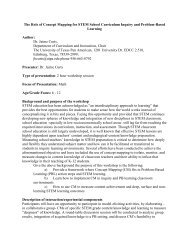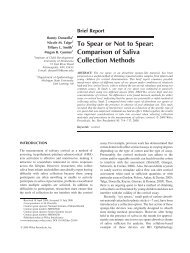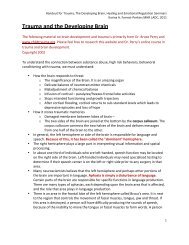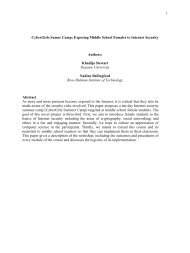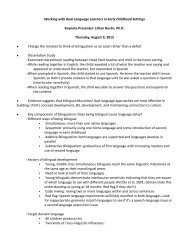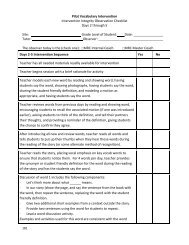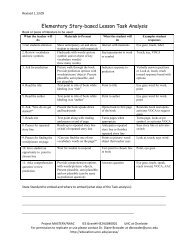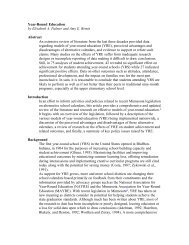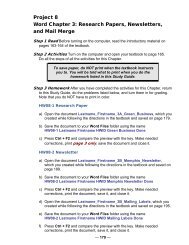Introduction to Positive Ways of Intervening with Challenging Behavior
Introduction to Positive Ways of Intervening with Challenging Behavior
Introduction to Positive Ways of Intervening with Challenging Behavior
You also want an ePaper? Increase the reach of your titles
YUMPU automatically turns print PDFs into web optimized ePapers that Google loves.
Is there anything else I should consider?<br />
Token economies have the advantage <strong>of</strong> being an intervention which can be used in cooperation <strong>with</strong> parents. For<br />
example, students may wish <strong>to</strong> choose reinforcers which exist at home, such as television viewing. Additionally,<br />
parents may be able <strong>to</strong> carry out aspects <strong>of</strong> the <strong>to</strong>ken economy at home, increasing its generalizability.<br />
When implementing your <strong>to</strong>ken economy in the classroom, it is important <strong>to</strong> remember <strong>to</strong> give the student<br />
verbal praise for appropriate behavior and for achieving goals, and <strong>to</strong> review the rules <strong>with</strong> students as needed.<br />
Also remember <strong>to</strong> choose <strong>to</strong>kens which are not easily accessible outside <strong>of</strong> the classroom. Otherwise, you may<br />
suddenly find that the student seems <strong>to</strong> be spending a lot more <strong>to</strong>kens than he or she is earning!<br />
You do not need <strong>to</strong> wait <strong>to</strong> get <strong>to</strong> know your students before beginning a <strong>to</strong>ken economy. Starting one as soon<br />
as it is deemed necessary prevents the student from having <strong>to</strong> unlearn poor behavior that was previously <strong>to</strong>lerated<br />
in the classroom.<br />
While a <strong>to</strong>ken economy can be very intricate and time-consuming, it can also be designed <strong>to</strong> be very simple<br />
and easy <strong>to</strong> implement.<br />
Finally, as <strong>with</strong> any intervention, it is very important that a <strong>to</strong>ken economy be carried out <strong>with</strong> consistency<br />
and given some time <strong>to</strong> have an effect before it is modified or before its usefulness (or lack there<strong>of</strong>) is determined.<br />
References<br />
Abramowitz, A.J., & O’Leary, S.G. ( 1991). <strong>Behavior</strong>al interventions for the classroom: Implications for students <strong>with</strong> ADHD. School<br />
Psychology Review, 20, 220-234.<br />
Den<strong>to</strong>n, J.J. (1978). Changing social behavior and cognitive skills. The Clearinghouse. 52, 184-188.<br />
Burke, J.C. (1992). Decreasing classroom behavior problems: Practical guidelines for teachers. San Diego: Singular Publishing Group,<br />
Inc.<br />
This publication was supported by Grant #H029K20171, Special Project <strong>to</strong> Provide Technical Assistance, Inservice Training<br />
and Site Development for <strong>Positive</strong> <strong>Behavior</strong>al Support Strategies for Students <strong>with</strong> Disabilities from the U.S. Department <strong>of</strong><br />
Education. The University <strong>of</strong> Minnesota is an equal opportunity employer and educa<strong>to</strong>r.




